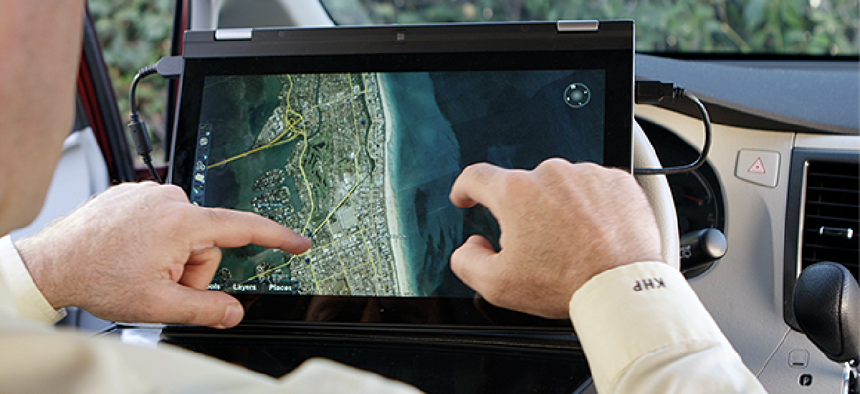GIS collaboration software goes mobile

TouchShare adapts the TouchTable concept for mobile platforms, offering mission planners and emergency responders real-time collaboration.
In many of the old war movies I watch, mission planners crowd around a sand table in a smoke-filled room to map out an operation.
But it's not just the military that uses this collaborative strategy. Many government agencies that deal with emergencies and rapidly changing situations find that sand table collaboration leads to better, more informed decisions.
A high-tech decedent of the sand table is a GIS information table, like the TouchTable that can display very detailed maps with vital information overlaid on top as needed. But it also required collaborators to be in the same room. When dealing with a situation like the Boston Marathon bombing, such a gathering might not be possible for some time after the event. And real-time information from people in the field might not become part of the decision process until it's too late to make a difference.
For agencies that need the power of a TouchTable, but also the speed of real-time collaboration, the company is coming out with a product that runs on tablets, PC and mobile devices — and even changing the company name to reflect this new focus. It’s now called TouchShare.
The move to a mobile product specifically aimed at government agencies was an easy one to make, according to TouchShare officials. "Collaboration is one of the most important things you can do in an emergency," said Bob Pette, CEO of TouchShare. "Anytime you have multiple smart people working together, you will come up with a better decision than if one or two people were making those calls alone."
The new TouchShare software runs on PCs and Windows tablets right now, and it is being optimized for the iOS platform with a projected January release date. After that, Pette said, the platform will be rolled out to Android devices as well.
For the mobile interface, a few concessions had to be made because of the limitations of the hardware, but Pette doesn't think that many people will notice. The biggest one is that it’s a 2D interface on the mobile platform, whereas users who worked with a TouchTable could experience everything in 3D. The mobile interface is streamlined and made completely of JavaScript, with a few PHP calls.
The main program can be installed in the cloud, with seat licenses shared among users. The software currently runs as part of the Amazon Web Services but is in the process of getting certified to run within specific government cloud services. For agencies that really want to lock down their security, the software can be set to run on a standard server behind an agency firewall.
Once deployed, it will allow mobile users to not only collaborate with others as if they were standing around one of the big TouchTables but also to add information, photos, videos or personal assessments into the pool of data that the group is considering. Doing something on the tablet interface, such as circling an important landmark, is also instantly shared with the rest of the group.
Mobile TouchShare costs $4,000 to install on a server or in the cloud, and that comes with 100 client licenses. Pette said he expects the iOS version will cost about the same amount, and it will also be offered as an additional fee to existing systems.
It offers an effective way for agencies ranging from military to emergency responders to collaborate about important events. Although I think something is lost with the removal of the actual sand, I suppose given the fact that most mobile electronics are made of silicone is sort of like carrying the sand along for the ride, just in a much more useful format.





